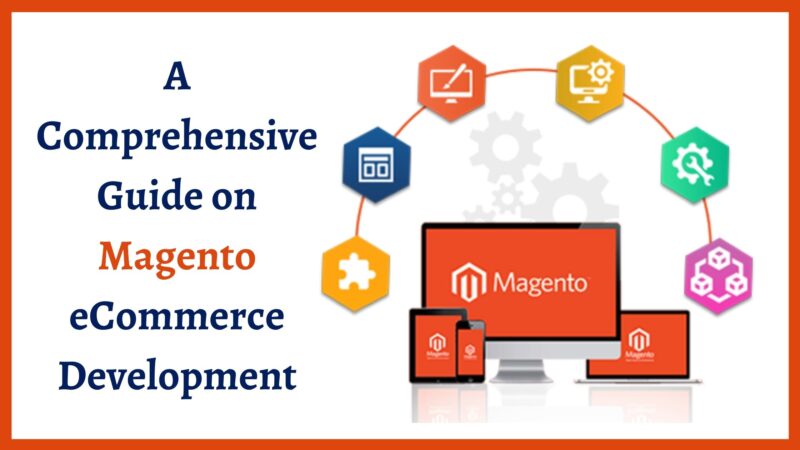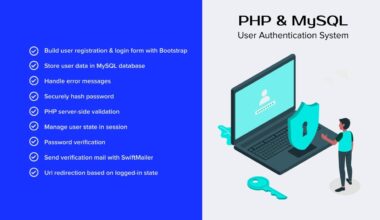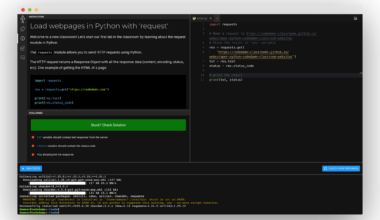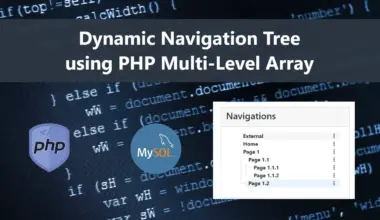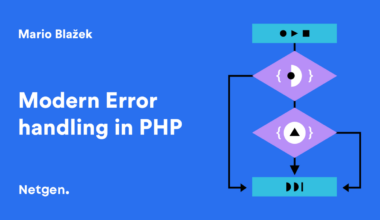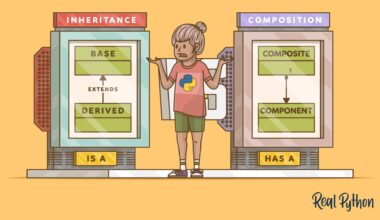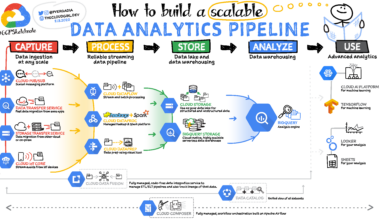The Power of PHP in E-commerce
As an open-source scripting language, PHP has become a popular choice for developers in creating e-commerce solutions. It is a server-side language that can generate dynamic web pages and handle back-end processes, making it an essential tool for building online stores.
PHP offers several benefits that make it a powerful tool for e-commerce development. Firstly, it is easy to learn and use, with a simple syntax that simplifies coding. Secondly, it is compatible with various operating systems, including Windows, macOS, and Linux, making it a versatile language for developers. Thirdly, it supports the development of custom applications, making it ideal for creating unique and robust e-commerce solutions.
Moreover, PHP has a vast community of developers who continuously improve the language, creating libraries and frameworks that simplify e-commerce development. Some of the popular PHP frameworks for e-commerce include Laravel, CodeIgniter, and Symfony.
PHP can handle a wide range of e-commerce functionalities, including inventory management, shopping cart systems, and order processing. It can also integrate with various payment gateways, making it a reliable choice for online stores.
In conclusion, PHP is a powerful language that offers several benefits for e-commerce development. Its ease of use, compatibility, and customizability make it a popular choice for developers, while its vast community and frameworks simplify e-commerce development. When combined with e-commerce platforms like Magento, PHP can create robust, scalable, and secure online stores that drive business success.
Benefits of Using Magento for Online Stores
When it comes to e-commerce platforms, Magento is a popular choice for developers because of its flexibility and scalability. It is an open-source platform that provides a wide range of features and functionalities that can be customized to meet the needs of different businesses. Here are some of the benefits of using Magento for online stores:
1. Customizable Themes and Templates
One of the key benefits of Magento is its ability to customize themes and templates. With hundreds of free and paid themes available, businesses can create a unique and user-friendly online store that reflects their brand and attracts customers. Developers can also customize the themes and templates according to their needs, adding new features and functionalities.
2. Multi-Store Management
Magento offers multi-store management, which means businesses can manage multiple online stores from a single admin panel. This feature is useful for businesses with multiple brands or product lines, as it allows them to manage their stores more efficiently and effectively. They can also share customer data across the stores, reducing duplication and improving customer experience.
3. SEO-Friendly
Magento is designed with SEO in mind, making it easier for businesses to optimize their online stores for search engines. It supports features such as meta tags, sitemaps, and URL rewrites, which help businesses to improve their search engine rankings and drive more traffic to their online stores.
4. Mobile-Friendly
In today’s mobile-driven world, having a mobile-friendly online store is essential. Magento is responsive, meaning it adapts to different screen sizes and devices, providing a seamless user experience across all devices. This feature helps businesses to attract and retain customers, as more and more people shop online using their mobile devices.
5. Abandoned Cart Recovery
One of the biggest challenges for online stores is cart abandonment. Magento provides abandoned cart recovery features, which help businesses to recover lost sales by sending emails to customers who have abandoned their carts. This feature reminds customers of the items they left behind and encourages them to complete their purchase.
In conclusion, Magento is a powerful e-commerce platform that provides a wide range of features and functionalities for online stores. Its customizable themes and templates, multi-store management, SEO-friendliness, mobile-friendliness, and abandoned cart recovery features make it an ideal choice for businesses looking to create a robust and
Customizing Magento with PHP
Magento provides a wide range of features and functionalities that can be customized with PHP, making it a flexible and scalable platform for e-commerce development. Here are some ways to customize Magento with PHP:
1. Creating Custom Modules
Magento provides a modular architecture that allows developers to create custom modules that extend its functionalities. With PHP, developers can create custom modules that add new features and functionalities to the online store. For instance, developers can create custom modules that integrate the online store with third-party applications or add new payment gateways.
2. Customizing Themes and Templates
Magento’s themes and templates can be customized with PHP, enabling developers to create unique and user-friendly online stores that reflect their brand. With PHP, developers can customize the CSS, JavaScript, and HTML of the themes and templates, making it easier to add new features and functionalities. This customization can be done by editing the code directly or by using a PHP framework such as Laravel.
3. Creating Custom Reports
Magento provides a wide range of reports that help businesses to track their sales, inventory, and customer data. With PHP, developers can create custom reports that provide more specific and detailed insights into the online store’s performance. For instance, developers can create custom reports that track the most popular products, the most profitable customers, or the most effective marketing campaigns.
4. Customizing Checkout Process
Magento’s checkout process can be customized with PHP, enabling businesses to create a seamless and user-friendly checkout experience for their customers. With PHP, developers can customize the checkout process by adding new steps, fields, or payment options. This customization can be done by editing the code directly or by using a PHP framework such as CodeIgniter.
In conclusion, customizing Magento with PHP provides businesses with the flexibility and scalability they need to create unique and robust e-commerce solutions. By creating custom modules, customizing themes and templates, creating custom reports, and customizing the checkout process, businesses can create online stores that meet their specific needs and drive business success.
Integrating Payment Gateways with Magento and PHP
Integrating payment gateways with Magento and PHP is essential for online stores as it enables customers to make secure payments for their purchases. Magento offers several payment gateway options, including PayPal, Stripe, and Authorize.Net, which can be integrated with PHP to create a seamless checkout experience. Here’s how to integrate payment gateways with Magento and PHP:
1. Choose the Payment Gateway
The first step in integrating payment gateways with Magento and PHP is to choose the payment gateway that best suits your business needs. Magento offers a wide range of payment gateway options, including PayPal, Stripe, and Authorize.Net. Each payment gateway has its own features, pricing, and requirements, so it’s essential to choose the one that fits your business model and customer preferences.
2. Install the Payment Gateway Extension
Once you have chosen the payment gateway, the next step is to install the payment gateway extension on your Magento store. Magento offers several payment gateway extensions that can be easily installed and configured. You can install the extension manually or use Composer, a PHP package manager, to install and manage the extension.
3. Configure the Payment Gateway
After installing the payment gateway extension, the next step is to configure the payment gateway settings. You will need to enter the payment gateway API credentials, such as the API key and secret key, to enable the payment gateway to communicate with your Magento store. You can configure the payment gateway settings from the Magento admin panel, under the Payment Methods section.
4. Test the Payment Gateway
Once you have configured the payment gateway settings, it’s essential to test the payment gateway to ensure that it’s working correctly. You can do this by placing a test order and making a payment using the payment gateway. This test order will not affect your inventory or customer data, but it will enable you to test the payment gateway’s functionality and ensure that it’s processing payments correctly.
5. Monitor Payment Gateway Performance
After integrating the payment gateway with Magento and PHP, it’s essential to monitor its performance regularly. You can use Magento’s reporting tools to track your payment gateway’s performance, such as the number of successful payments, failed payments, and refunds. This data can help you identify any issues with the payment gateway and optimize
Final Thought: Maximizing E-commerce Success with PHP and Magento
In today’s fast-paced and competitive business world, having a robust and secure online store is essential for success. E-commerce platforms like Magento and programming languages like PHP provide businesses with the tools they need to create unique and scalable online stores that meet their specific needs.
By leveraging the power of PHP, businesses can create dynamic web pages, handle back-end processes, and integrate with various payment gateways, providing a seamless and secure checkout experience for their customers. Moreover, PHP’s customizability and compatibility make it an ideal choice for creating unique and robust e-commerce solutions.
Magento, on the other hand, provides businesses with a wide range of features and functionalities that can be customized and integrated with PHP to create a user-friendly and scalable online store. With customizable themes and templates, multi-store management, SEO-friendliness, mobile-friendliness, and abandoned cart recovery features, Magento is an ideal choice for businesses looking to create a successful online store.
In conclusion, maximizing e-commerce success with PHP and Magento requires businesses to leverage the power and flexibility of these tools to create unique and scalable online stores that meet their specific needs. By customizing Magento with PHP, integrating payment gateways, and leveraging the power of modern e-commerce features, businesses can drive more traffic to their online stores, increase sales, and improve customer experience.
